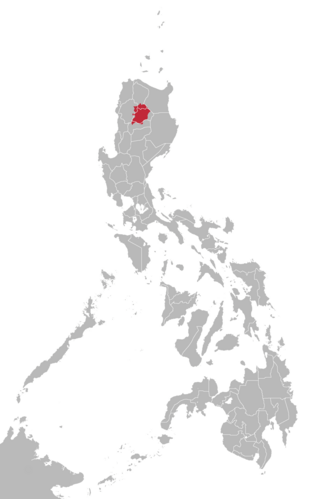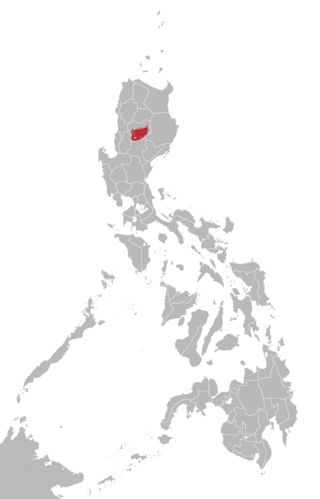Related Research Articles
Most languages of Europe belong to the Indo-European language family. Out of a total European population of 744 million as of 2018, some 94% are native speakers of an Indo-European language. Within Indo-European, the three largest phyla in Europe are Romance, Germanic, and Slavic, they have more than 200 million speakers each and together account for close to 90% of Europeans. Smaller phyla of Indo-European found in Europe include Hellenic, Baltic, Albanian, Celtic, and Armenian ; Indo-Aryan, though a large subfamily of Indo-European, has a relatively small number of speakers in Europe.

The Misumalpan languages are a small family of languages spoken by indigenous peoples on the east coast of Nicaragua and nearby areas. The name "Misumalpan" was devised by John Alden Mason and is composed of syllables from the names of the family's three members Miskito, Sumo languages and Matagalpan. It was first recognized by Walter Lehmann in 1920. While all the languages of the Matagalpan branch are now extinct, the Miskito and Sumu languages are alive and well: Miskito has almost 200,000 speakers and serves as a second language for speakers of other indigenous languages in the Mosquito Coast. According to Hale, most speakers of Sumu also speak Miskito.
Luhya is a Bantu language of western Kenya.

Miskito is a Misumalpan language spoken by the Miskito people in northeastern Nicaragua, especially in the North Caribbean Coast Autonomous Region, and in eastern Honduras.

Kalinga is a dialect continuum of Kalinga Province in the Philippines, spoken by the Kalinga people, alongside Ilocano. The Banao Itneg variety is not one of the neighboring Itneg languages.

Ifugao or Batad is a Malayo-Polynesian language spoken in the northern valleys of Ifugao, Philippines. It is a member of the Northern Luzon subfamily and is closely related to the Bontoc and Kankanaey languages. It is a dialect continuum, and its four main varieties—such as Tuwali—are sometimes considered separate languages.

Bontoc (Bontok) is the native language of the indigenous Bontoc people of the Mountain Province, in the northern part of the Philippines.

The Mayangna are a people who live on the eastern coasts of Nicaragua and Honduras, an area commonly known as the Mosquito Coast. Their preferred autonym is Mayangna, as the name "Sumo" is a derogatory name historically used by the Miskito people. Their culture is closer to that of the indigenous peoples of Costa Rica, Panama, and Colombia than to the Mesoamerican cultures to the north. The Mayangna inhabited much of the Mosquito Coast in the 16th century. Since then, they have become more marginalized following the emergence of the Miskito as a regional power.
This article provides a grammar sketch of the Miskito language, the language of the Miskito people of the Atlantic coast of Nicaragua and Honduras, a member of the Misumalpan language family and also a strongly Germanic influenced language. There also exists a brief typological overview of the language that summarizes the language's most salient features of general typological interest in more technical terms. Miskito language is widely spoken in Honduras and Nicaragua as Spanish, it is also an official language in the Atlantic region of these countries. With more than 8,000,000 speakers, Miskito has positioned in the second place in both countries after Spanish. Miskito is not only spoken in Central America, but in Europe, USA, Canada and in many other Latin American countries there are Miskitos who made their lives and maintain their culture and language alive. Miskito used to be a royal state language.

The Ovambo language is a dialect cluster spoken by the Ovambo people in southern Angola and northern Namibia, of which the written standards are Kwanyama and Ndonga.
Chácobo-Pakawara is a Panoan language spoken by about 550 of 860 ethnic tribal Chácobo people of the Beni Department of northwest of Magdalena, Bolivia, and 17 of 50 Pakawara. Chácobo children are learning the language as a first language, but Pakawara is moribund. Karipuna may have been a variant; alternative names are Jaunavô (Jau-Navo) and Éloe.
Sisaala (Sissala) is a Gur language cluster spoken in northern Ghana near the town of Tumu and in the neighbouring republic of Burkina Faso. Western Sisaala is intermediate between Sisaali and Tumulung Sisaala.

S’gaw, S'gaw Karen, or S’gaw K’Nyaw, commonly known as Karen, is a Sino-Tibetan language spoken by the S'gaw Karen people of Myanmar and Thailand. A Karenic branch of the Sino-Tibetan language family, S'gaw Karen is spoken by over 2 million people in Tanintharyi Region, Ayeyarwady Region, Yangon Region, and Bago Region in Myanmar, and about 1 million in northern and western Thailand along the border near Kayin State. It is written using the S'gaw Karen alphabet, derived from the Burmese script, although a Latin-based script is also in use among the S'gaw Karen in northwestern Thailand.
The Roglai language is a Chamic language of southern Vietnam, spoken by the Raglai people.
One is a Torricelli dialect cluster of West Wapei Rural LLG in Sandaun Province, Papua New Guinea.
Huishui Miao, a.k.a. Huishui Hmong, is a Miao language of China. It is named after Huishui County, Guizhou, though not all varieties are spoken there. The endonym is Mhong, though it shares this with Gejia and it is simply a variant spelling of Hmong. Raojia is closely related.
Guiyang Miao, also known as Guiyang Hmong, is a Miao language of China. It is named after Guiyang County, Guizhou, though not all varieties are spoken there. The endonym is Hmong, a name it shares with the Hmong language.
Lohorung, also spelled Lorung, Lohrung or Loharung, is a Kirati language of eastern Nepal. It has been described by George van Driem.
Lamaholot, also known as Solor or Solorese, is a Central Malayo-Polynesian dialect cluster of Flores, Indonesia. The varieties may not be all mutually intelligible; Keraf (1978) reports that there are 18 languages under the name.
Kimaragang (Marigang), Tobilung, and Rungus are varieties of a single Austronesian language of Sabah, Malaysia. The three varieties share moderate mutual intelligibility. Children are not learning it well in some areas.
References
- ↑ Mayangna at Ethnologue (18th ed., 2015) (subscription required)
Ulwa at Ethnologue (18th ed., 2015) (subscription required)